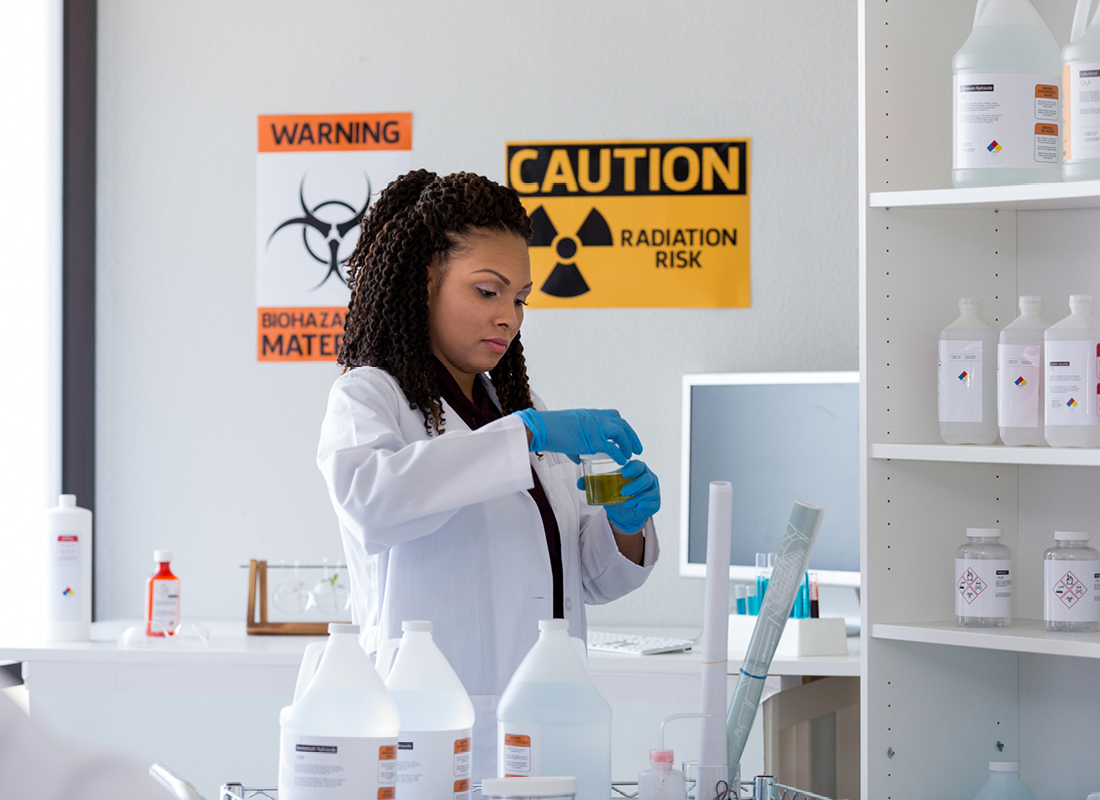OSHA Citations for Hazardous Chemicals in Labs May Stem from Subpar Training
Standard 1910.1450 requires labs to have a chemical hygiene plan.

According to the latest available data from the Occupational Safety and Health Administration (OSHA), the most cited standard in medical laboratories is 1910.1450, which covers exposure to hazardous chemicals in the lab.1,2
Safety expert Marge McFarlane suspects part of that problem stems from a lack of initial training for recently hired laboratory staff.
“So many lab employees get onboarding with the hospital or some online program that talks about sexual harassment, diversity, HIPAA, general bloodborne pathogens maybe, and then there will be just two or three slides on hazardous chemicals,” says McFarlane, PhD, MS, MT (ASCP), CHFM, CSP, HEM, MEP, principal at Superior Performance Consultants in La Pointe, WI. “What will get labs in trouble the soonest is that new employees do not receive adequate training to understand the hazards of the chemicals that they are dealing with day in and day out.”
Training requirements from OSHA
Under section 1910.1450(f), OSHA outlines training and information requirements related to handling hazardous chemicals in a laboratory:
-
- Labs must make employees aware of the hazards of chemicals in work areas.
-
- Workers must know the location of the chemical hygiene plan and chemical safety data sheets.
-
- Labs must inform staff about permissible exposure limits to hazardous chemicals.
-
- Employees must be familiar with the signs and symptoms of hazardous chemical exposures.
- Training must include ways for workers to protect themselves from hazardous chemicals and provide information about physical and health hazards of chemicals in the lab.
Traditionally, information about physical and health hazards has been relayed via a diamond divided into four quadrants as established by the National Fire Protection Association (NFPA).3 The red quadrant refers to flammability, yellow to instability, blue to health, and white to special circumstances. Further, the red, yellow, and blue quadrants contain numbers ranging from 0 to 4, with 0 indicating a minimal hazard and 4 indicating a severe hazard. These classifications also tie into OSHA’s hazard communication standard (1910.1200).
“OSHA says that you can use the NFPA diamonds on chemicals or you can train people with pictograms,” McFarlane says, adding that safety-minded labs will use both approaches.4
Top Cited OSHA Standards in Medical Labs
Here are the most frequently cited standards from OSHA in medical laboratories.1 This list is from 2022, the most recent data available online from the agency:
1. Occupational exposure to hazardous chemicals in laboratories (standard number 1910.1450)
2. Air contaminants (1910.1000)
3. Reporting fatalities, hospitalizations, amputations, and losses of an eye as a result of work-related incidents to OSHA (1904.139)
4. Respiratory protection (1910.134)
5. Portable fire extinguishers (1910.157)
6. Bloodborne pathogens (1910.1030)
“My solution to that is to post the OSHA pictograms,” she adds. “Labs can print pages from OSHA or they can buy laminated posters from lab safety supply companies. Then post them somewhere so that people, when they pick up chemicals, will see the pictograms on the bottles as required by OSHA for shipping the product, but if they don’t know or remember what the pictograms mean, they’ll also have the ready reference pictogram guide on the wall.”
Avoid storing chemicals alphabetically
A prime area for training is storage of hazardous chemicals. OSHA has little to say in this area; section 1910.1450(f)(3)(v) mentions the need to have reference materials available that outline how to store chemicals. From that perspective, it is largely left to labs to relay this information during training and in the chemical hygiene plan.
Some labs may be inclined to store chemicals in alphabetical order to make it easier to find them. But that approach is risky, McFarlane says.
“If I want the ammonia alphabetically, I know where it is,” she adds. “And unfortunately, it’s living right next to the bleach. So, ammonia leaking plus bleach leaking equals chlorine gas, and that could kill someone. It’s incompatible chemical storage.”
Safety data sheets explain these storage risks, but many people in the lab may not check them frequently enough, she says.
Designate a chemical hygiene coordinator
Other tips from McFarlane to stay in compliance with 1910.1450 include the following:
-
- Assign a chemical hygiene coordinator who is qualified. If a lab wants to name a specialist as the coordinator, leaders should verify their qualifications, McFarlane says. OSHA itself does not designate specific criteria for a chemical hygiene coordinator, simply stating under the definitions section of the standard that such a person “is qualified by training or experience, to provide technical guidance in the development and implementation of the provisions of the chemical hygiene plan.”2 That leaves a lot open to interpretation, but McFarlane suggests naming a person with broad experience in laboratory work. She recalls a hospital that wanted to name a histologist as the chemical hygiene coordinator. “The histologist had no idea about what the rest of the laboratory did,” McFarlane recalls. “They could speak to formalin, but they could not speak to Gram stain and disposal.”
- Sign the review of the chemical hygiene plan on time. Under 1910.1450(e), OSHA requires the hygiene plan to be evaluated annually. December is a common month for many labs to conduct annual reviews. “Annual means annual, so if the review is due by December 1, it has to be signed by December 1,” McFarlane says.
If a lab is having trouble meeting 1910.1450, it’s worth cross-checking those requirements against lab accreditation standards, such as those from the College of American Pathologists, McFarlane notes. OSHA inspections are infrequent, but an accreditation survey is also a chance for labs to slip up if they are not careful with areas such as the chemical hygiene plan.
References:
Subscribe to view Essential
Start a Free Trial for immediate access to this article